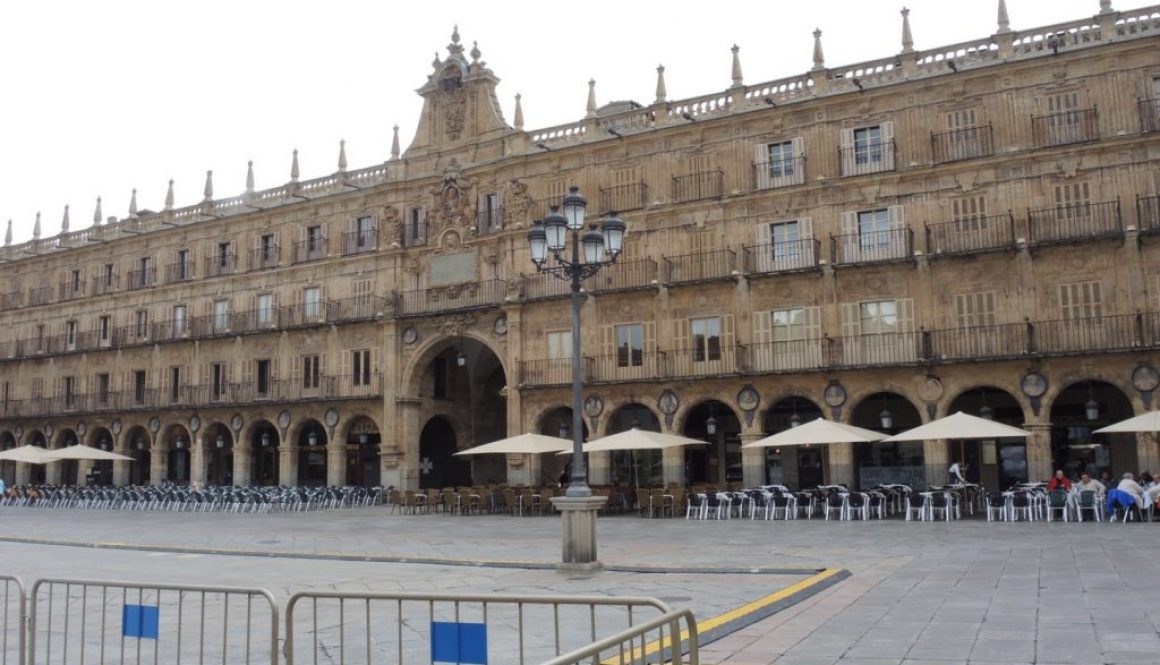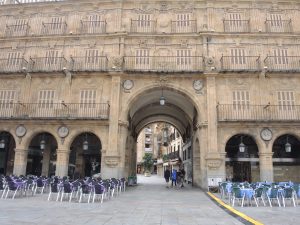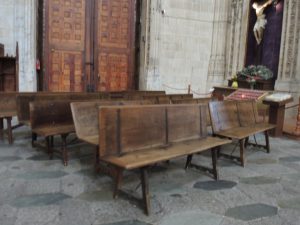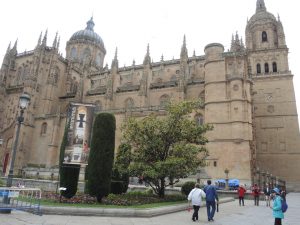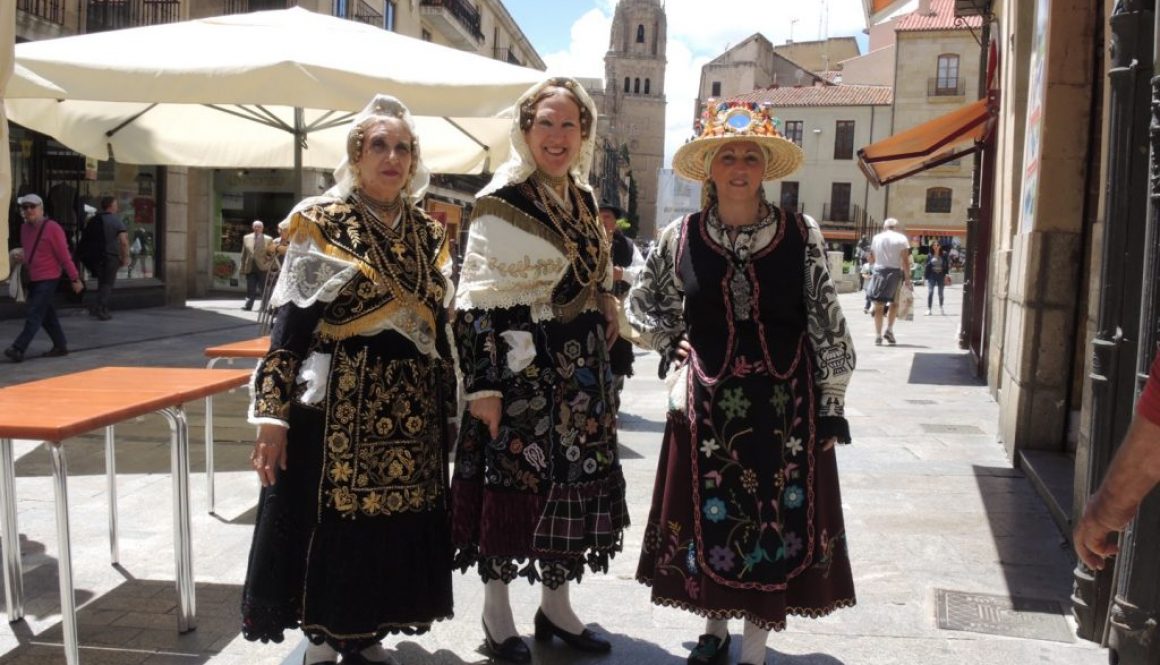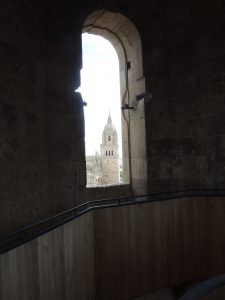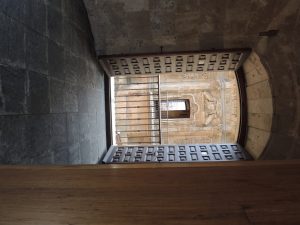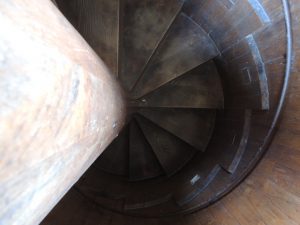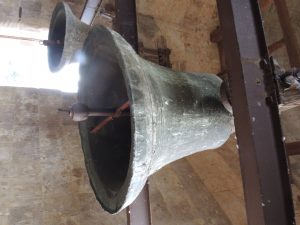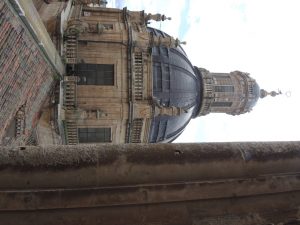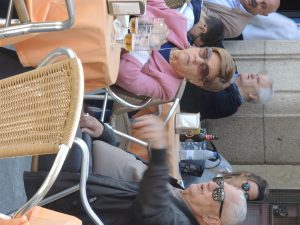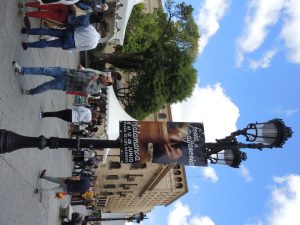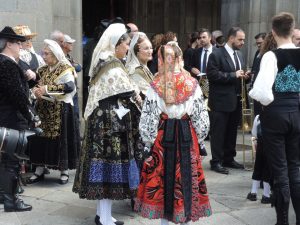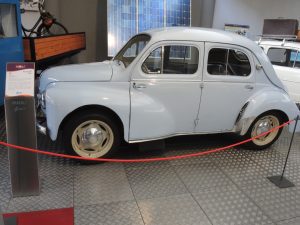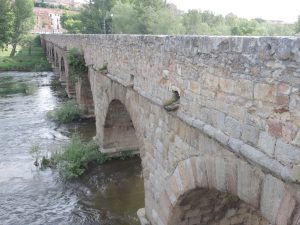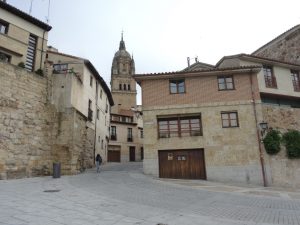Travelling from Oviedo to Salamanca
I left Oviedo this morning on route to Salamanca around 7.30am, the weather had improved and there was no rain. The journey today took me via Leon, a city I visited in 2014 when doing the French Camino, although today’s short visit was not to old part of town, but rather to the bus station. We seem to have travelled in a crisscrossing way on the way down to the Castilian region, so the over 5 hours timeframe to reach Salamanca.
This is my first visit to this University city of some 200.000 people. Whilst there are many significant highlights in this city, its most significant buildings are its University – which is one of the oldest in Europe, founded in 1218, and its cathedral. I took a short guided city tour this afternoon, and according to the guide, the Catholic kings, Isabel and Fernando, lived here for a time, and it was in this city that Cristobal Colon, came to see them to discuss his proposed trip to the new land, prior to his 1492 trip pass the end of the earth to what we now call Latin America. Colon lived in one of the monasteries for 3 moths, whilst he negotiated with the kings.
Following a light lunch I took a self guided audio tour of both the old and new cathedrals. Yes there are two cathedrals, and you may ask why two?. Well the old cathedral was built in the 10th century and is a mixture of architectural styles. There are Gothic elements, while the cupola, the Torre del Gallo, reflects a Roman and Byzantine influence.
During the 14th and 15th centuries Salamanca not only became a centre of intellectual activity across Europe, but also grew considerable as a result of students and sometimes their families moving to this city. This meant that the old church was a not suitable both in size but also in style. The new one, a fusion of Gothic, Renaissance and Baroque architecture.
To enter the old cathedral one must first go into the new cathedral, as if one was travelling back in time. Both are architectural masterpieces in their own right. The new one is majestic and significantly larger in size and very ornate, quite clearly a lot of gold was transported from the Americas for these capillas to be built.
There are many chapels, too numerous to name all, but let me indulge you in naming one.
The San Martín Chapel is also known as the Aceite (oil) Chapel, because it was used to store the earthenware jars of oil that were used to fuel the lamps in the Cathedral. The thickness of its wall meant that during the Spanish Civil War, it was used as an air-raid shelter, and even General Franco is reputed to have sheltered here.
Another interesting fact is that the dome of the Old Cathedral is commonly known as the “Torre del Gallo” (Cockerel Tower) due to the weather vane in the shape of a cockerel on top.
An peculiar fact mentioned in the audio guide was that following the 1755 Lisbon earthquake the cathedral bell tower was seriously damaged. The bell mechanism was damaged so the bell-ringer had to climb up to the bells to ring them. This tradition continues to this day and each 31 October, someone wearing a traditional Salamanca outfit climbs the tower and plays a charrada a traditional Salamanca tune.
Another interesting note is that during restoration work in 1992 stonemasons put a little astronaut as well as an ice cream cone into the facade of the cathedral.
After the visit to the cathedral I joined a group for a 45 minutes tour across the old town in a mini train. This provided not only a general commentary – and a pocket history of Salamanca- but it also gave me good ideas of places to visit tomorrow. It was certainly worth doing this tour.
Following the short tour, I walked to one of the many university buildings. I was particularly looking to see its library, said to be one of the oldest public and university libraries in the world. As this is a research library, one can only see it through a glass enclosure. It is certainly magnificent and ornate.
I also travelled through many public parks and plazas. Talking about plazas I visited the plaza Mayor, one of the most beautiful public plazas in Spain. According to the tour guide, this plaza was built between 1729 and 1755. It is an exceptionally grand square which is widely considered to be Spain’s most beautiful central plaza. Many locals as well as tourists, not only go there to explore but also at times to meet friends. There are many restaurants and coffee shops with outside tables to enjoy the atmosphere of this beautiful Plaza Mayor.
As night was falling I visited a local restaurant to enjoy the menu del dia – menu of the day. A great way to end the day accompanied off course by a glass of sangria.
Looking forward for more exploration tomorrow.
